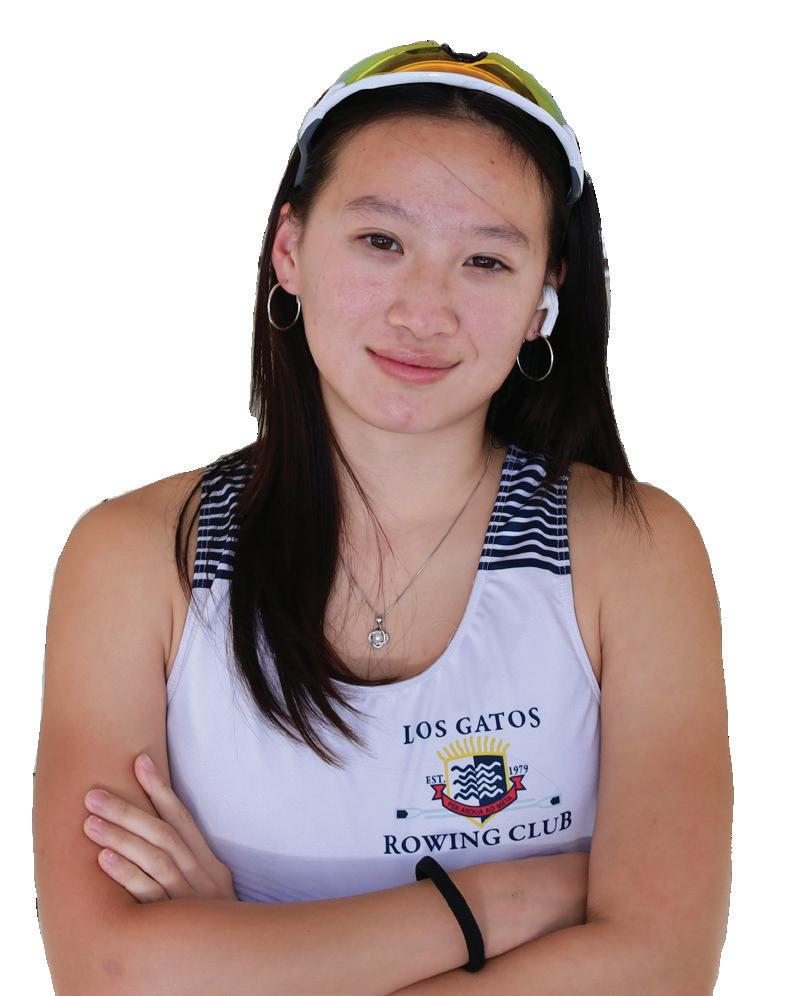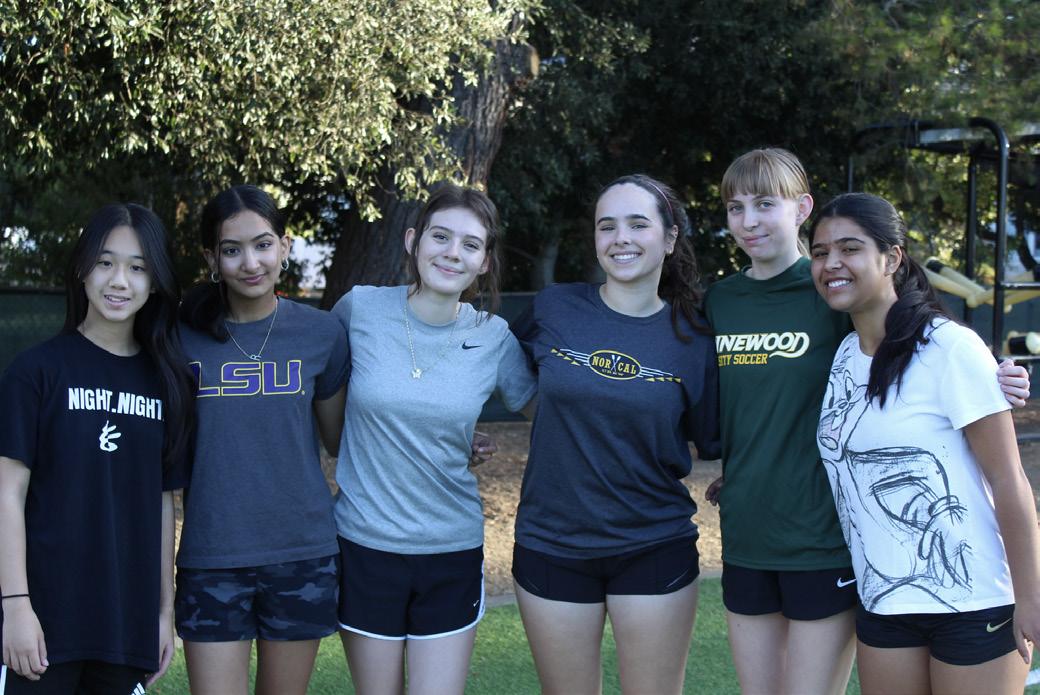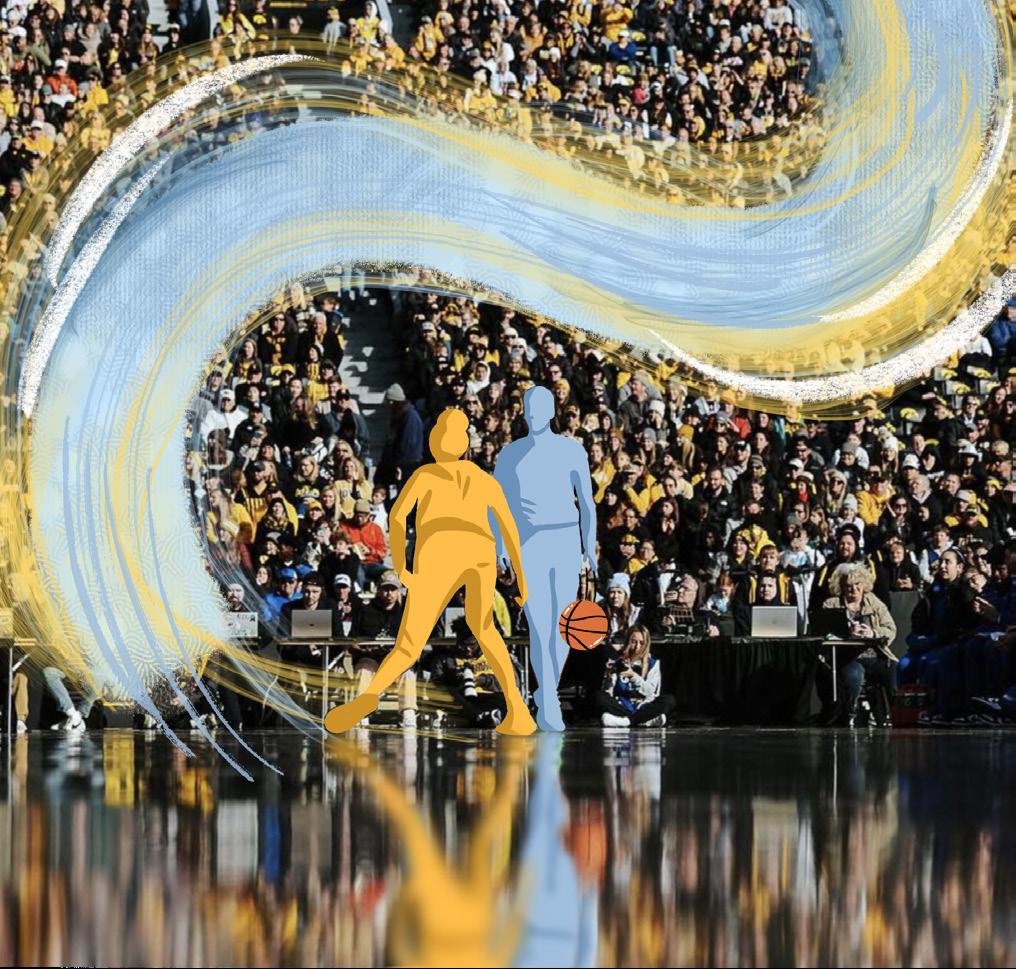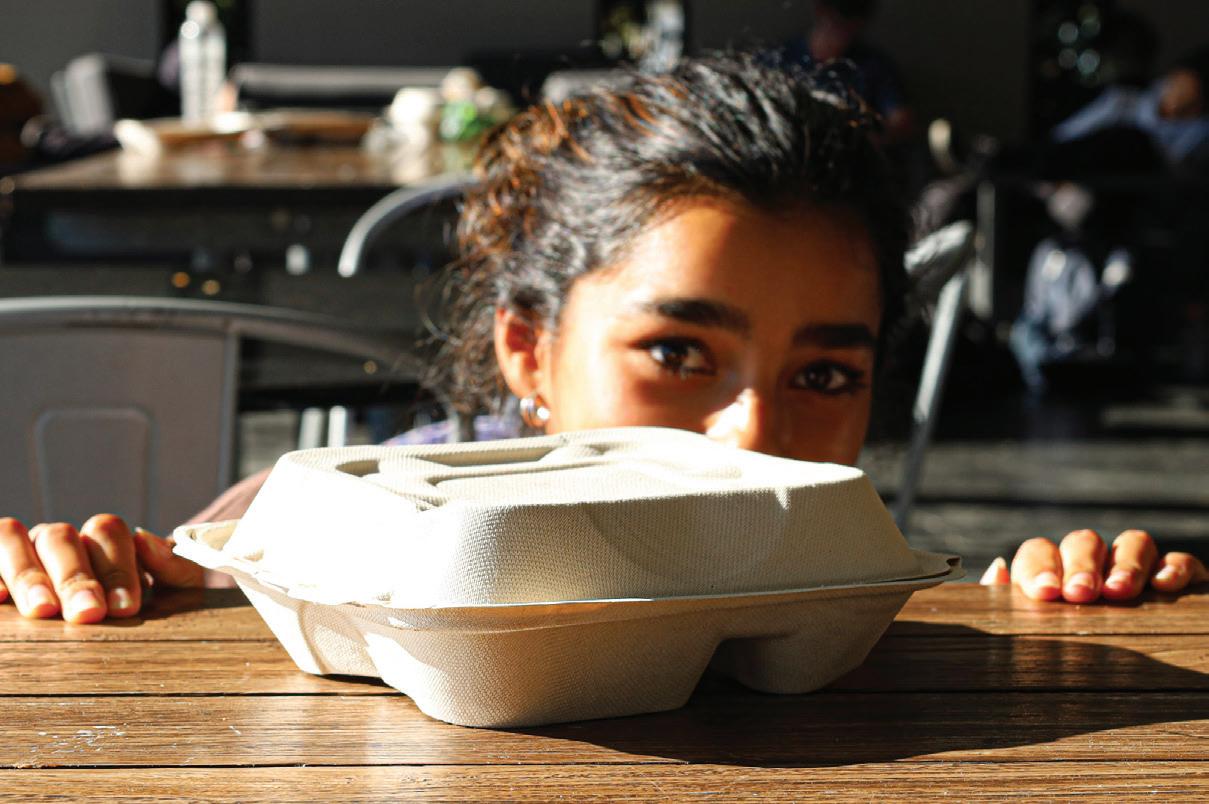Opinion
Science & Technology
Arts & Culture
Sophomore Esha Joshi details the history of Hindu music and provides a firsthand account of performing it.


Opinion
Science & Technology
Arts & Culture
Sophomore Esha Joshi details the history of Hindu music and provides a firsthand account of performing it.


Israel declared war on the Palestinian militant organization Hamas after Hamas’s raids killed more than 1,200 people. Now, Israel is retaliating with attacks that have taken more than 11,200 lives. At Pinewood, reactions to the attacks vary. Though Muslim and Palestinian students attend Pinewood, they declined requests to comment for this article.
Some students are fearful that many innocent people, particularly Gaza residents, are affected by the fighting.
“It’s kind of expected just because of all the conflict in the region,” Jewish senior Makena Matula said. “But I know that Israel has had a large history of human rights abuses, and civilians are dying.”
Matula said that the difference in military strength between Israel and Hamas puts Palestinian civilians in higher danger.
“It’s saddening because Israel technically declared war on Hamas, but all Palestinians are affected,” Matula said. “I am just scared for Palestinians.”
Palestinian students are experiencing similar emotions, fearing for their family and friends living in Gaza.
“[I’ve received] crushing, heartbreaking messages from my sister’s friend who lives in Gaza,” Palestinian-American and Gunn High School senior Deena Abu-Dayeh said in an interview for The Campanile, Palo Alto High School’s student newspaper. “She sent a message saying, ‘My battery’s almost out. If I’m not alive, I want you to spread my message about the Palestinian reality.’”
For some Pinewood students, the war threatens their loved ones’ safety. Senior Jakob Kleiman, who is the president of the Jewish Student Union, said that the hostages captured in videos circulating on social media reminded him of his friends training for the Israeli Defense Force.
“It’s especially spooky because I have a number of friends who are 18 years old in Israel right now that look like that,” he said.
Another Jewish student, eighth grader Eli Fooksman, had family at risk in the area. His sister was in a bomb shelter for three days and heard sirens and explosions. Fooksman is keeping in contact with his sister and her boyfriend, who have relocated to Greece to escape the bombings, and said she is handling the situation well.
Kleiman and Fooksman have funneled their passion into fundraising and educating. Kleiman’s Jewish Student Union raised $370 for medical aid in southern Israel, while Fooksman writes posts on social media with information he believes the public should know about the war.
“In this time of grief, Jews always find a way to bounce back,” Kleiman said. “It’s kind of beautiful to see everyone drop everything to protect the people they love.”
Pinewood’s administration hopes to keep unity. Head of School Scott Riches, Head of Upper Campus Gabriel Lemmon and Assistant Head of Upper Campus Haley Hemm have each released statements offering unity and support. Lemmon reminded students that
high school and junior high school counselors Stephanie Fugita and Lyndsey Duerden are available to talk to students if needed. All three administrators also provided resources on how to talk about the war.
“I was just reading about the increase in both antisemitism and Islamophobia that has happened since the start of this war,” Head of Upper Campus Gabriel Lemmon said. “It’s something that we have to make sure that we counteract at Pinewood.”
Lemmon has been communicating with parents and staff about creating a safe environment for Muslim and Jewish students. Lemmon said that he has reached out to those with connections to the area.
“I was heartbroken,” Lemmon said. “ My whole job in the world is to ensure the growth and safety of young people so that they can flourish. And war is such a direct confrontation of those things that I value so much.”
As schools in the United States experience everything from walkouts in support of Palestinian citizens to arson against a Jewish student’s dorm, they are taking action to ensure the safety of their students. The Palo Alto Unified School District passed two resolutions relating to the conflict. One aims to combat antisemitism amongst students while the other aims to combat Islamophobia amongst students.
At Pinewood, the administration hopes that there will be no reports of conflict amongst students and that they continue supporting each other through this difficult time.
“We have to make sure that we take care of everybody here, and that the conflict that brings the world apart can’t be something that brings us apart,” Lemmon said.
They crawl into your lockers, sneak into classrooms and assault you repeatedly during class. The ants and flies at Pinewood Upper Campus have now become a significant issue for the community, calling for an imminent solution.
Many students and faculty have been bothered by the pests on campus. There have been swarms of flies in classrooms, crowds of ants spotted in the locker rooms and even an occasional mouse in



The bugs issue has been a problem for many years, and there has been little to
Detrick said that she often encounters ants in food-related areas, so she wonders if leftover trash and food from lunch may be contributing to the issue.
Head of Science Department Kim Hudson believes that the pest affair may
“[Biology teacher Monica] Ventrice and I have always thought that the ant issue is a result of most of the rooms being vacant during the summer,” Hudson
“The ants are disturbed by us moving around, and by the end of the summer, water is scarcer, so the ants head inside to look for some.”
Hudson said that the flies are in classrooms because of breeding season and warmth.
“There is much less likely to be strong breezes to move them away,” Hudson said.
It seems as though the pest issue is simply driven by nature, and is likely to stick around. Until then, grab a fly swatter.
“Oh, you row? You must have really strong arms!” This is a statement every rower has heard at least five times in their rowing career.
Contrary to popular belief, rowing utilizes your whole body, primarily your legs, not just your arms. Most people are probably thinking of kayaking, a completely different sport. I know that’s what I was thinking of when I started rowing in eighth grade.
With just two days of prac tice a week, I fell in love with the sport. Gliding through the water and hearing the click of the oars resound, I felt a connection to rowing that I had never expe rienced before. What was originally just a simple signup button eventually became something that I looked forward to every day after school.
the whole team down. And when the meters drop to zero, the crowd bursts into cheers.
But in the end, that feeling of accomplishment you gain after your workout is worth any amount of pain that you have to endure. When you’re able to say you gave it your all and have no regrets, that’s what true accomplishment feels like.

As I grew more committed, there was another aspect of rowing that I fell in love with: the team culture. There’s no other feeling that emulates your teammates cheering you on as you go into the last few hundred meters of your workout on the rowing machine. Your heart beats in your throat. Your body feels like it’s about to give out. The only thing keeping you going is the fact that your teammates are watching. That’s when you tell yourself that if you give up, you’re letting
This summer, I traveled across the country to race at nationals in Florida in a coxed quad, which is a boat with four rowers and a person who steers. The memory of lining up at the start line is still vivid in my mind. Taking a deep breath to calm my nerves, I could feel the damp air entering my lungs. The Florida sun seared my skin, and sweat collected in beads on my forehead. Looking left and right, I saw the other boats lined up, all nervously waiting. I looked at my teammates as we all gave knowing nods to each other: we got this.
A minute left. I thought of my coaches watching from the sidelines, my family watching back home and my teammates rooting for us. This is what I’ve been training for this whole year. This is what hours upon hours of practice has amounted to. This was it.
“Attention,” said the announcer. I braced my core, tensed my quads and took one final breath in. “Row.”
Eight minutes went by. We placed eighth. Eighth in the whole nation. I couldn’t be prouder of my boat for our accomplishments. We did it.
As the microphone cables clicked, the high-hat pounded and the bass shook through the stage, the Pinewood community got their first look at this year’s junior high band. The band, complete with pianists, drummers, violinists and singers, played their first gig of the year at the Jamboree in October, led by musician and teacher Will Rees.
Rees started the junior high band six years ago when his first child, senior Bridget Rees, moved from Middle Campus to Upper Campus. Rees wanted to replicate Middle Campus’ music programs, but he found the options lacking.
“In junior high, there was choir but not really much else, [and] I [thought] I could probably provide a little something kind of like School of Rock,” Rees said. Rees’ background in music and past experiences qualify him for leading the band. His bachelor’s degree in music and significant experience as a musician solidify his reputation.
Rees said that during his time in his own band, he took a leadership role and directed his bandmates, which prepared him for directing the band here at Pinewood.
Rees’ goal with the junior high band is multi-faceted. He wants to provide a space for students to sing, play and experiment with their instruments, while also helping them gain confidence to play in front of an audience. Rees said his third, subtle goal was to teach music theory to his students.

With the band’s first gig at the Jamboree, Rees said that playing in front of a receptive audience comparedto the challenges of a tight schedule. Despite the challenges of having a range of experience levels from his musicians, Rees had high praise for the courage shown by the band.
“The thing that’s always so incredibly inspiring is that they’re always so brave, and they just get out there and they do it in front of the whole school,” Rees said. “It’s really incredible.”
While he leads and directs the band, Rees’ favorite part is when students suggest improvisations to the system or songs. Rees said this shows him they have their own ideas, and confirms to him that he has created a safe space for ingenuity. Rees also loves to inspire his students to think differently about music.
A shining example of what Rees looks for in a band member is Adelynn Wang, a seventh grade pianist who joined because of her desire to learn more music.
“I want to experiment with more instruments,” Wang said. “Over the summer, I attended a camp that allowed me to play other instruments, and I really liked it.”
Wang also admired the musical diversity of the band.
“I think we have a good variety of instruments, and I like how we do all sorts of songs from different genres,” Wang said.
Rees enjoys his time coaching the band through the ups and downs of the musical journey, and he hopes to continue fostering a knowledge and passion for music through leading the young musical group.
With the winter sports season in full swing, the Pinewood boys and girls soccer teams take the field with renewed excitement. The addition of boys soccer head coach David Hernandez and the influx of new players on both teams has provided an extra spark of motivation.
Hernandez is looking to change the team culture this year, highlighting two main goals for his players.
schools that we lost to last year,” Yang said. “I think we can come up with a good result against schools like Sacred Heart and Menlo.”
The team looks to build off positive results from last year, such as its 2-2 draw against Menlo School.

“My main goals are to make sure all the players are on the same page,” Hernandez said. “I want it to be a family at the end of the day.”
Hernandez said that he’s excited about what he sees so far.
“It’s been good. There’s a plan set for them to improve and they’re hungry to get better,” Hernandez said.
With these new goals in mind, Hernandez named two junior players he expects to lead the team after the departure of multiple seniors.
“Paul Sapilewski and Koh Taradash,” Hernandez said. “Since day one, you can tell that more people listen when they’re talking.”
Last year’s leading scorer, Harry Yang, is another player who will guide a team full of new faces. He had one main objective for the upcoming season.
“We just want to compete with some of the bigger
Photo by GABBY YANGSimilar to the boys, Pinewood girls soccer is preparing to bounce back from losing a lot of senior talent last year.
Head Coach Whitney Wood is excited about the promise of her team.
“I was impressed with the few girls who haven’t played before,” Wood said. “They’re catching on really fast and working really hard.”
With this, Wood knows that young teams require experienced veterans to guide them. She named three multi-year starters as the leaders of the team.
“Our captains this year are Charlotte van Gent, Caroline Blotter and Lacey Armistead,” Wood said. “I’m really looking at those three leaders to step up and show leadership on the field.”
Junior Armistead was full of praise for her younger teammates and has high hopes for the season.
“The team looks solid,” she said. “The freshmen are working really hard to replace the seniors we lost last year.”
With a combination of experienced leaders and determined newcomers, Wood has high expectations for her team this year.
“Last year, we got fifth place,” Wood said. “Our goal is to get at least fourth and make the playoffs this year.”
Best described as a cocktail of emotions, senior night is a moment that student-athletes both look forward to and dread. For many, this event marks a major accomplishment, as it caps off an athletic career filled with unforgettable memories. But at the same time, senior night is the final domino to fall in a high school athlete’s career. Over the past few weeks, Pinewood has celebrated their seniors across the fall sports.
The girls volleyball team finished off their season with a dominant 3-0 win over Eastside, as they cheered on seniors Sophia Yao and Anna Beltyukova. Through a season of ups and downs, the team rallied together to form a tight bond.
side her sister, freshman Devyn Smith, for the first and last time. As the season comes to an end, Smith says that she will miss the community she formed on the tennis team, especially connections made with the sophomores and freshmen.

These athletes’ experiences illustrate the deeply sentimental and reflective aspects of senior night. Many are overcome with emotions but excited for the future. Others are reminiscent of the good times and disappointed time passed so quickly. It’s an indescribable blend of emotions that one will never understand until they are the ones being hon ored on their special nights. And through the many tra ditions and speeches that take place on se nior night, the bonds formed through athletics are magnified.
Winter sports have begun and the new boys and girls basketball seasons are underway. Both teams are thrilled to improve upon their previous seasons and become the best they can be.
Last season, the girls basketball team was met with lots of adversi ty, including season-ending injuries and player ineligibilities. Never theless, they rallied to finish as coleague champions and went on to play Archbishop Mitty in the CCS Finals and Oak land Tech in the CIF Northern Section playoffs.
Senior Alex Facelo was espe cially frustrated with last year’s circumstances but plans to come back stronger.
“Last year, our team was just robbed of our transfers, and we had a lot of hurt people,” Facelo said. “But I feel like this year we’re out to give people a beating.”
Over the offseason, the girls played in numerous club games and contin ued their weight training programs in preparation for this winter.
“I feel like throughout the summer and fall we have had the same team,” Facelo said. “So I think that really helped us prepare because we just play so well together.”

Another component of the team’s success is the team’s chemistry.
“I think our chemistry on the court kind of comes off of our chemistry off the court,” senior Sachi Urushima said.“We’re all really good friends and have a good bond, and it really shows when we play.”
As preparations continue, Facelo is confident in the team’s ability to compete against the top schools.
“I know that we’re not scared to go against anyone because we’re competitive,” Facelo said. “It also helps that we play together so well.”
As for the boys, the team faced top competition, like Priory and Sacred Heart, which challenged them to play to their best abilities and evaluate areas for improvement. This year, the team plans to hone in on their ball handling, passing and shooting abilities as well as their overall team defense. Senior George Textor is looking forward to getting better everyday.
“I think we can improve defensively,” Textor said. “We got a lot more experience on the team because of last year.”
To get ready for the upcoming season, the boys team played some summer league games and participated in open gym runs. Sophomore Josh Tian was an active participant in both.
“I feel like our team was really close this year and that I was friends with each girl,” Yao said. “Our practices were also really fun, and sometimes we would all just end up laughing on the ground.”
Similarly, girls tennis also capped off their season with a win against Woodside Priory as they cheered on senior Kaelyn Smith.
“My senior night was amazing,” Smith said. “It was such a great night to appreciate my team and coach and to also feel their appreciation as well.”
For her senior night, Smith played doubles along-
Senior football player Ethan Roh said his senior night bridged the gap between the underclassmen and the seniors, as they realized that team responsibilities would soon be in their hands.
For Roh, the prospect of senior night had always seemed far away — something that would come eventually, but not anytime soon.
“I still remember the senior night against Priory two years ago,” Roh said. “I thought to myself that I have two whole years left to play, and now looking back, I’m realizing how quickly that time has flown by.”

“We did some summer league tournaments with the team to build our chemistry throughout the season,” Tian said.
“It’s all about preparing mentally and physically throughout the whole
As the season approaches, Tian is confident in his team. This confidence stems from the work they put in over the summer and their relationships with one other.
“We think we have a good squad this year,” Tian said. “We’re excited for this season and we’re ready to get some wins.”
I love space. I love the magnetic pull between celestial bodies, and the way the past is ingrained in the vast ocean above us. I love the rings of planets, the vivid colors and the specks of light that dot the alluring sky.
However, exploring space has a time and a place. That time and place is simply not today. We look up to a sky of wonder, yet we’re drowning in the world today. We always think of how a rocket can land on the Moon, but what about the cost?
We are putting time and money into finding out if there was a droplet of water on Mars at some point in time thousands of years ago, but for what purpose? This knowledge may fuel your patriotism by making other countries jealous of our precious discovery, but take a second to think: how much does this knowledge truly benefit humankind? Is it truly more important than ending terrorism? Ending addiction? Ending mental health crises? Being human should mean prioritizing our society and our planet over the enormous universe above us. If we cannot do this, we will have failed future generations. Take NASA’s discovery this month of the most distant black hole known to man. This discovery, while record breaking, has no positive effect on the world today. Imagine how different the United States could be if some of the $25 billion allotted to NASA went somewhere else; homelessness, comparatively, is given $3.6 billion, despite being more dire.
Critics may argue that useful technology has been a byproduct of space exploration, such as memory foam, freeze-dried food and Velcro. Overall, these innovations are irrelevant to society, especially given the extensive amount of time and effort necessary to achieve them. Furthermore, these technologies still may have existed without space travel; we will never know.
Space exploration is not an obligation. To survive, humans only need food, water, shelter and medical care. A scientific quest for more knowledge is not a need, it’s simply an interest at best. We want to know how the universe was formed and why light cannot escape black holes, but the greed for knowledge should not be prioritized over the necessities many humans lack. Two billion people live without access to clean water, yet many countries would rather blast off to another planet than help.
Additionally, humans do not have a great track record about caring for the needs of a planet; extinction, deforestation and contamination of water are all products of human behavior. What would happen when humans reach other planets? How do we know that we won’t be replacing each new planet we destroy with another, continuing on and on until every planet is a meaningless orb, spinning aimlessly in space?
It is fearfully ignorant to turn a blind eye to the world that we live in today; rape, starvation, climate change, trafficking and war are happening at this very second. Yet humans should not be destined to live in fear. So, before spending another second dreaming about the giant leaps for mankind, think of the small steps we can take for humanity.
Fixing the world will take time, money and effort; but it’s much more beneficial than blasting off to a utopian world in the clouds. First, look at where your feet stand.

Financial literacy is a crucial life skill that educates students on managing their finances properly. Financial literacy is a wise investment into students’ futures, and it ensures that students make knowledgeable financial commitments as they evolve into young adults. This course is essential to survive in the real world, so why isn’t it taught in most high schools?
Although financial literacy possesses numerous benefits for high schoolers, many disregard it as an essential skill. For one, financial literacy isn’t seen as a traditional school course. Academic subjects such as math or English are usually prioritized because they are evaluated on college standardized tests. While most high school students treat getting into college as their ultimate goal, they don’t realize that college is just the beginning of adulthood.

Financial literacy would be a great addition to Pinewood — it is an indispensable skill that every student should possess for any career path. Financial literacy is not only essential for accumulating wealth but also for maintaining it. Even if students amass wealth through hard work and previous academic knowledge, they could lose it all because of one poor financial decision. Furthermore, implementing financial literacy at Pinewood would help cultivate a culture of financial responsibility and
independence among students. Rather than encountering avoidable mistakes as adults, a financial literacy course guides students to make informed decisions with their money earlier. Additionally, teaching financial literacy at Pinewood will reduce the stress students experience when they leave high school and start to manage their money independently.
Although Pinewood does currently offer an optional economics course, it does not encompass the same concepts that a financial literacy course would. While economics is a great course that teaches us how the market works, financial literacy is necessary for us to learn how to budget and save our money. Financial literacy teaches us to create a balance between our needs and desires so that we can incorporate our knowledge into our adulthood.
Even if implementing an entire course on financial literacy may not be feasible, there are other ways to educate students on this concept. For instance, Pinewood could organize workshops, allocate time during community days or integrate financial literacy into Pinewood’s speaker series.
Financial literacy aligns with Pinewood’s mission to develop well-rounded individuals and critical thinkers that thrive beyond their college years. As long as we don’t overwhelm students with the workload, financial literacy would be a great course to integrate into our curriculum.
I watch my friend dab his greasy pizza with a brown napkin, working to remove the grease and oil. I look down at my pizza, thinking if I should do the same. Ignoring him, I bite into my pizza, realizing I’m consuming an ocean of grease with each bite. I stare into the soul of the pepperoni, counting each piece. I am bewildered — there are only seven thin pieces of pepperoni, and the pizza takes up only three-fourths of the plate’s allotted pizza section.
Later, I am shocked to learn that not only did this lunch cost $8.50, but also that I’ve been eating the same overpriced meals since I was in second grade at Lower Campus.
After years of gobbling down my greasy pizzas, I’ve concluded that Pinewood’s lunch is simply too expensive for the quantity and quality of the food. Students have expressed their desires for more than four grapes and much larger pizza slices. However, after bringing my lunch from home, I realized I could get enough food to fill me up for much cheaper.
Pinewood’s lunches lack enough variety to be enjoyable for students. Ever since my days at Lower Campus, I realized that the foods we have been
eating have all been the same. My peers and I have been able to make out the pattern of lunch meals: Monday is sandwiches, Tuesday is pasta, Wednesday is foreign cuisine, Thursday is pizza and Friday is burgers and hot dogs.
The lack of variety in these lunches has made our taste buds bored and the overall lunch experience mundane. Another thing to notice is that the foods we eat could introduce us to new cultures and cuisines, but if we eat the same lunches every week, this brings this to a halt.
Finally, Pinewood lunches bring little nutritional value to the table, preventing students and faculty from having healthy eating habits. For example, pasta lunches contain more noodles than meat, fruits or veggies; such an unbalanced meal is certainly not beneficial or nutritious. Protein, for example, is an essential part of life because it gives us the energy we need for our day ahead, and protein is made of amino acids that help repair our bones and muscles to stay healthy.
Ultimately, while there are a multitude of changes that can be made to better the Pinewood lunch experience. Epicurean has done work and continues to put in their best effort. I hope Pinewood can continue to work with them on making our food the best it can be.
55,646 fans. Nationally-televised women’s basketball game. Iowa City, Iowa. Put it in the record books.
The roar of the Hawkeye crowd rings in the ears of every player, coach and fan in Kinnick Stadium. As time wears off the clock and tip off approaches, anticipation builds and courses through the veins of everyone in the stands. Some break out in I-O-W-A chants, showing their Hawkeye pride; others take a moment to soak it all in, awestruck at the sight around them. Just as the team takes the court, the stadium erupts in boisterous applause, the cheerleading squad takes the field and the marching band plays a familiar tune.
From barely filling up one-third of a basketball arena to consistently selling out stadiums across the nation, women’s basketball is finally getting the recognition it deserves.
Amidst the chaos at Kinnick, the players warming up on the court search for a second of silence to not only recenter themselves and prepare for their game ahead, but also to appreciate this moment for what it was — history in the making. History for women’s basketball, history for women’s sports and history for all the little girls watching in the crowd or behind their screens at home.
It wasn’t long ago when I was that little girl staring up at the TV, teeming with excitement, and idolizing every player I saw. The Arike Ogunbowales and Napheesa Colliers of the world were my heroes. Now, sitting here in the same spot as I did so many years ago and watching Iowa University senior Caitlin Clark light it up in front of 55,646 fans felt surreal. Even though I wasn’t there to see it in person, I felt so connected to the fans and so in tune with the game because they understood the magnitude of this moment. It wasn’t just another game; it was a culmination of years and years of work that the generations before us dedicated to promoting the sport, and it was finally paying off.
As the same I-O-W-A chants blared through my TV screen again, chills crept over my body. It all felt like deja vu, and a huge smile spread across my face as Clark reminded the world of her greatness once again. She weaved through defenders, kissed the ball off the glass for a beautiful finish and orchestrated a perfect pick-and-roll, assisting Iowa to victory and dancing her way to a casual triple-double.
Despite what it seems, Clark is not a one-man show. What makes Iowa truly great and such a joy to watch is their competitiveness, unwillingness to back down to bigger, more talented teams and their unselfishness across the board. Every player buys into their role and plays it tremendously, resulting in phenomenal team synergy and cohesion. These qualities make it so easy to root for a team like Iowa. And no, I’m not a bandwagon. I’m simply a fan
who appreciates good basketball.
Although good basketball may look different for every viewer, one thing almost everyone can agree on is the greatness of this new generation of players. The talent and skill level in the women’s game is currently at an all time high, and thankfully, this hasn’t gone unnoticed. From WNBA all-stars like Sabrina Ionescu coming out with her first Nike signature shoe, the Sabrina 1, to the local expansion of the WNBA with a new team coming to the Bay Area in 2025, the future of women’s basketball is in good hands.
That’s why this outdoor game at Kinnick Stadium was more than just a game to me. Today, it serves as a reminder of how far women’s sports has come in the past couple of years. If you told my younger self, that little girl looking up at the TV with wondrous eyes, that almost 10 million people were rejoicing in women’s basketball at once, she wouldn’t have believed you. Not for one second. If you told her that a local hero in Ionescu came out with her own shoes, she would’ve stood with her mouth agape one second and pranced around the next. Seven years ago, I didn’t think this was possible, but now, it’s becoming our reality.
This is why reminiscing on the scene at Kinnick brings me an indescribable sense of happiness. The joy the Iowa women’s basketball team exhibits is exactly what our girls team is trying to replicate here at Pinewood: playing with intensity, a love for the game and something bigger than ourselves. That’s what will separate us this season, and I can’t wait for everyone on campus to not only witness it, but be a part of it as well. So, join us in the Panther Pit this season. We want to hear your chants, your spirit and your passion. We want you to be a part of what we’re creating.
Because if Iowa can do it, why can’t we? Why not us?

For too long, the top one percent of athletes have dominated the screen during the Olympics. For too long, the Olympics have set unreasonable expectations for our children and our children’s children. It’s all fun and games to witness pure talent mixed with perfected diets topped with a sprinkle of toned muscles, but what about the rest of us? What about the famously unnamed, the perfectly ordinary and the wondrously terrible that make up the other 99 percent of the population?
Every child has their phase of staring in awe at the foot of the TV screen — eyes glued to the glowing athletes crowned in medals and showered with praise. Hopes and dreams of being the person to feel the mighty weight of a gold medal have floated in the back of our minds at least one point in our lives. The status of an Olympic athlete has reached a near untouchable level, leaving the average citizen to be seen as a lesser being in the face of otherworldly athletes. But, it does not have to be this way. The world is tired of feeling the shame upon comprehending the incredible skill of Olympians. Humanity has reached a modern era of pride in participation awards, and it is time to extend this mindset to the Olympics. These new
games would shower the average athlete with praise and glory; one wouldn’t have to be the epitome of human athletic perfection in order to be admired.
Imagine an international stage lined with our neighbors and friends. Better yet, visualize the local grocer on the felted balance beam or your basket-weaving coach lined up at the 100-meter dash. Picture an acupuncturist cutting across frigid ice or a wedding planner clad in goggles and a speedo. In other words, envision an Olympic Games that, for once, depicts the average and glorifies the ordinary. The possible contestants are endless, and you could be one of them.
Not only this, but hidden talents would finally show their faces in front of an international audience. Coaches and peers alike would bear witness to raw talent being displayed on every platform. Contracts would be signed and hands would be shaken when the average citizen is allowed to feel what it’s like to make their nation proud. It is nearly inconceivable to imagine trying out for the Olympic Games nowadays, let alone accepted as a stable career prospect. But what if the requirements were simply a brave heart, a strong will and a slight lack of common sense? Consider this my official application to join the Olympic gymnastics team.

Three things are inevitable in life: death, taxes and the common app. I’ve spent countless hours in front of a computer screen, typing away at ridiculously vague supplemental essays, with each draft getting progressively cringier. But no, I just had to make my life harder, and what better way to drain the already limited time I have to work on my school assignments and college applications than to play sports?
Don’t get me wrong, I don’t regret joining football one bit, but GOD it was stressful. Instead of sitting at home doing homework with an Arizona in my hand, I was practicing in full pads in 90 degree weather. Not the best tradeoff. But football’s impact on my productivity extends far beyond the time it took because — big shocker — football was really tiring. I’d get back home at 5:30 p.m., take a shower and by the time I finish eating dinner, I’m ready to clock out for the day and take a snooze. But no, I’ve got a pile of homework from my five AP classes waiting for me. My fellow senior and teammate Edward Xia states that football drains his energy as well.
“Being physically tired takes a toll on time management, because obviously your body takes time to recover [after football],” Xia said. “Being sore and tired from practice makes [me] feel kind of lazy, and I don’t feel motivated to work.”
But, what I’ve slowly begun to realize is just how little I get to see my family now. There were days when I didn’t get home from football until 8 p.m., and after just brief greetings at the door, I was in my room buried in homework. Senior Kaelyn Smith, who was both in the play and on the girls varsity tennis team, had a similar experience.
“I get home so late, and my family’s super busy too,” Smith said. “My sister’s always running off to basketball, and my brother has theater, so it’ll be nice to actually sit down and talk to them now that tennis and theater are over.”
Senior Ethan Roh, a member of the football team and boys varsity basketball team, says that he has a lot on his plate as well. Roh’s involvement in sports, his four AP’s and his responsibilities as ASB president has been a large time commitment, limiting the amount of time he’s been able to spend on college applications. Yet, Roh says that he found a unique way to ease his stress level.
“You do the best you can, and the decision of getting in or not isn’t up to you,” Roh said. “At the end of the day you don’t choose, so there’s no reason for me to be stressed over something I can’t control.”
Since she was a young girl, Assistant Head of Upper Campus Haley Hemm found solace and wonder in the natural beauty of the world around her, forging a profound connection that would stay with her for the rest of her life.
“I remember in first or third grade, Joan Eagleton was our elementary school librarian whom I’m still very close with,” Hemm said. “I remember telling her I like the ocean and her showing me this beautiful reef book I’ve tried to find ever since, and I was instantly captivated.”
Even before that, her favorite movie was “Free Willy,” directed by Simon Wincer. The film portrays the bond between a boy and a captive killer whale, which helped establish Hemm’s connection to nature from a very young age. Additionally, Hemm’s childhood dog, Comet, was named after Halley’s Comet, the first periodic comet to be recognized. Comet and Hemm would frequently go on adventures in Hemm’s backyard.
Although Hemm loves all aspects of nature, she says her heart belongs to the ocean.
“I think what I love about it so much is that it feels like another universe,” Hemm said. “It truly feels like another world, like exploring a new planet.”
Hemm’s love for nature also helped Hemm and history teacher Sam Jezak find their wedding venue. Located at the Seymour Marine Discovery Center in Santa Cruz, Hemm and Jezak celebrated their wedding by the ocean.
“The location was the perfect representation of what we love and who we are,” Hemm said. “If we think about the life we created and the people we are, a wedding near the ocean and the redwood trees was perfect for us.”
Even though Hemm wanted to be a marine biologist as a young girl, being an educator helps her have time to explore both her passions.
“As an educator, I’m able to do the things I love in education,” Hemm said. “I can also incorporate marine biology into what I’m doing with students, whether it’s the Pinewood Ocean Ambassadors Club or partnering with biology teacher Monica Ventrice for the Madagascar trip.”
Currently, Hemm participates in volunteer reef checks, where she goes scuba diving and collects data from the sites she visits.
“There is so much we can learn about how to live better and more fulfilling lives observing and learning from marine mammals,” Hemm said.
 Photo By SAM JEZAK
Photo By SAM JEZAK
America’s sweetheart: the peanut butter and jelly sandwich. A schmear of creamy peanut butter across white sandwich bread. A touch of fruity jam to offset the buttery decadence. The gateway to the vast universe of American cuisine.
About three-quarters of the United States’ population is given the privilege to experience the true bliss of this sandwich. However, the remaining one-quarter has to suffer with carrying around packets of antihistamines, occasionally EpiPens in more severe cases. Peanut butter and jelly sandwiches alone contain two of the top nine allergens.
Food allergies and restrictions are large hindrances to one’s lifestyle and are often the root of excessive stress, anxiety and insecurity. Despite extensive testing and research, existing treatments are not always dependable. It’s difficult to develop an inclusive, yet consistently effective treatment option as food allergies and immune-restrictions can manifest differently in each individual.
you first have to bother them with the, “Does this have ___ in it?” line and constantly double-check to ensure your health is not being compromised. Every. Single. Time.
Living with a peanut allergy hasn’t been easy, but it is something I have to work around. I had to get used to hearing annoyed, snarky comments from waiters after asking three times if the food has peanuts in it. Immunotherapy is something that I have been considering. Despite reassuring conversations with my allergist about the benefits of immunotherapy, the prospect of ingesting peanuts is hard to fathom. To me, nirvana would be a vaccine which seems to be in the works.

However, immunotherapy has gained popularity among those with allergies. It’s a long-term commitment that requires persistent patience and endurance. Immunotherapy begins with a small, doctor-administered dosage of the allergen to desensitize the individual to the food(s) they’re allergic to. Over time, the dosage will slowly increase to build up one’s immune defense to the allergen. This specific treatment is called oral immunotherapy, but there are other alternatives. All forms of this treatment require the patient to maintain physical contact with the allergen to fortify their immune system.
It’s not easy living with a food allergy. Before grabbing that slice of cake from your friend’s birthday party table,
At Pinewood I don’t have to worry about being exposed to peanuts as the accommodation of nut allergies in the Epicurean-provided lunch is commendable. However, individuals with other allergies are given little to no options. Besides some salads, there are few specific gluten-free, diary-free or vegan options in the Snack Shack or hot lunch. A more inclusive array of choices would be ideal to ensure that no one is left out. Epicurean said that they are working on expanding their food options, but they take extra precautionary measures for students with special dietary requirements that may be life-threatening.
Photo By BILLY LLOYD“[We] work with parents that email or contact us to assist them in ordering meals that fit their students’ needs,” Director of Epicurean Trevor Lengle said. Pinewood also has implemented a new precautionary measure for those with medical complications such as food allergies to maximize safety and bring awareness to them. Faculty are alerted of any student allergy issues in Veracross to help with any issues that may arise.
With increased awareness of food allergies and the advent of new and improved allergy treatment, there is promise for the future of Pinewood and the world.
For the first time in Pinewood history, the Pinewood Technology Club will be hosting an on-campus Hackathon, PantherHacks, on Dec. 2.
“Hackathon is an event where schools, or teams from different schools, come together to code a project,” Tech Club President Catelijne Wessels said.
The projects are then evaluated by judges, and individuals or small teams have the opportunity to win prizes. Some hackathons can last up to 48 hours, but the upcoming one will last around 12 hours.
volunteers with coding experience) play more of a supporting role while the participants code. Teachers and staff members can also be mentors, but usually participate in the background.
PantherHacks is looking for more participants and sponsors so anyone that would like to try coding is welcome to join.
Each hackathon features a different theme that the participants do not know until the day of the event. The theme is intentionally meant to be vague and open-ended to allow students to be creative. Previous themes for the hackathon have included “global warming,” where a team developed a recycling app, and “upside down,” where another team programmed a video game that was literally upside down.
“Every time I go to a Hackathon, I have a new project with something that I haven’t learned yet,” Wessels said.
During the hackathon, mentors (student and parent
“It’s more like a subtle management role and not necessarily a tutorial or a mentor role,” advisor Haggai Mark said. “I’m basically supposed to make sure that things are, you know, not getting out of hand.” Participants have the option to choose any coding language (e.g., Python, Java, C++, Scratch) and difficulty level they want to use for their projects. This flexibility enables students of all skill levels to participate. Even students who do not have any coding experience can join the Hackathon, as the events are not only about applying previous coding knowledge but also about learning as you go.
“One of the goals of the Tech Club is to come up with apps or programs that would benefit the community,” Mark said.
PantherHacks is looking for more participants and sponsors, so anyone that would like to try coding is welcome to join by visiting the Tech Club’s website at pantherhacks.tech.
Everyone has grown up with the whimsical wordplay of Doctor Seuss. His work transcends time with a nostalgic and jubilant appeal that attracts all. Now, his readers can expect to be entertained as they watch his characters’ antics and quirks come alive onstage in the upcoming eighth grade musical.
Focusing on classic characters while blending stories to form a coherent script, “Seussical” is an amalgamation of all of Seuss’s greatest hits. It features elements of “Oh, The Thinks You Can Think,” “Horton Hears a Who” and “Green Eggs and Ham.”
Directors Carrie McRobbie and Katie Linza are having a blast with the invigorating characters of this production.
“[The characters] are very broad, a little over the top,” Linza said. “It’s really fun to bring those characters to life.”
As Seuss intended, the air of juvenile ridiculousness is truly embodied in the characterization in the script. The character that best exemplifies this is The Cat in
the Hat.
“Cat is super optimistic, and she kind of has to bring the energy, and I feel that that’s something I enjoy doing,” eighth-grader Aadya Kumar, who stars in the play, said.

To help display the inherently odd combination of slapdash fantasy and variety show, the musical centers around Jojo, a normal child approached by Cat. Cat subsequently pushes the boundaries of reality and makes Jojo’s thoughts come to life. Eighth-grader Shaan Parikh portrays Jojo and tries to bring a bit of a flair to his character.
“I try to be a little bit oblivious to the real world,” Parikh said. “All the roles are really different from each other.”
In addition to the aforementioned characters, there are a great deal of charmingly fanciful roles.
A musical based on Seuss’s work relies on this, as these roles often take center stage to convey a theme of naivety in conjunction with a relevant humor. Seussical will run from Dec. 14-16 at 7
Pinewood students are preparing to showcase their months of hard work and dedication through displays of dance and music at the annual Pinewood Winter Arts Festival on Thursday, Nov. 30. Featuring a wide range of students with unique skill sets, the Winter Arts Festival will feature performances from the Pinewood Singers, Women’s Chorus, Take Note and Panther Dancers.
Pinewood Singers member Alex Bull is performing as a part of the choir.
“[The choir] has been practicing since the beginning of the year,” Bull said.
Held two or three times a week, practices require dedication and consistency. Through the span of the past couple of months, the group has been working hard to perfect their singing.
Freshman Clara Eaton will be taking part in the choir and group performance portions of the show. She believes that the final product of their labors will be a result of the team’s valiant commitment and perseverance to the project.
“A lot of people have worked hard on this; the students’ as well as the teachers’ efforts [played a big role] in the [completion] of the showcase,” Eaton said.
“It is a really well organized event with a well thoughtout choir performance and passionate art pieces created by some unbelievably talented students.”
This festival is a way to shine light onto the multi-talented students of Pinewood, showcasing their artistic abilities in a unique way. As students express the creative side of their personalities through singing or dancing, they can inspire others to do the same.
Through the exhibits of music and dance, students may learn more about their classmates and grow closer as they talk of their experiences.
“I got to ask the artists about their pieces during the festival last year,” Bull said. “I was able to form meaningful conversations with people I had never really talked to before.”
The Winter Arts Festival will run from 6-8 p.m. and will be held at Congregation Beth Am at 26790 Arastradero Rd, Los Altos Hills, CA 94022.
On each day of Ganesh Chaturthi, a Hindu festival dedicated to the god Ganesha, my house hums with excitement. There’s the beautiful altar we construct with fresh fruits on silver platters and flowers adorning the clay statue in the center. There are the traditional clothes we wear with gold-stitched hems that sway at our ankles. There is the sandalwood incense and the fragrance of camphor, drawing swirling trails throughout the house.
Then there’s the music we play as we perform aarti, which involves lifting a platter of candles and powders and moving it in circles in front of a deity’s idol to demonstrate devotion and love. We put our palms together, close our eyes and murmur words that have been sung for centuries.
“Sukhkarta Dukhhurta Varta Vignachi…”
“Oh Lord, who provides joy, takes away sadness, and removes all obstacles…”
As a child raised primarily in an English-speaking household, Sanskrit, Hindi or Kannada lyrics were, and still are, difficult for me to understand. I could pick out the name of a deity or a familiar word, but the meaning escaped me.
It didn’t matter. The music washed over me, my grandfather reciting the chants in his low rumbling voice and my mother murmuring them in her higher one, and it sent chills through my body. I felt as though there was an invisible thread between me and something greater, something more powerful. Whatever it was, I was bonded to it.
The power of sound lies at the core of Hindu music. In Hindu cosmology, it’s believed that sound — specif ically, the syllable om — was the first element of cre ation, followed by air, fire, water, and earth. Sound is timeless, tying the present to the world at its birth, the destruction of this cycle and life being born anew.
While Hinduism is full of colorful rituals, a rich tap estry of mythology and thousands of gods and idols, simple devotion is the heart of the tradition, and music is considered a way to touch the Divine. It is impossible to divorce Hindu rituals, or pujas, from the songs we play to accompany them.
That’s why Hindus recite shlokas, which are poetic verses and mantras, which are sim pler sounds to incite spiritual connection. Families will often have a single god that they revere most passionately, and they’ll sing bhajans, simple spiritual songs, to that God. The song I referenced above, “Sukhkarta Dukhharta,” is a bhajan de voted to Ganesha.
Hindu music and chants don’t need to be complicated to give the singer or lis tener the thread that links them with the Divine. Om, alone, is thought to have im mense power, which is why it is often recit ed at the beginning of shlokas or mantras and before yoga practices. However, Indian classical music can also be incredibly complex, composed from melod ic structures known as raga and rhythms known as taal. Now, the syllables and sounds of Hindu devotional music have been etched into my mind. As I take the

You may have seen an extravagant sea of lights sprawling the entire Cue Quad at Upper Campus last week.
On Nov. 9 from 6 to 8 p.m., over 100 attendees attended Pinewood’s celebration of Diwali, the Indian festival of lights.
Organized by Diwali Celebration Chair Rohini Panjrath, mother of Pinewood third and eighth graders Ayan and Arvin, the event began with an hour of Indian song and dance, including a performance of “Chammak Challo” and “Sonoran Dooba Hain” by eighth grader Aadya Kumar.
jrath said.
For senior Vishesh Ranganathan, the event made him feel more represented in terms of his culture on campus.
“It was great to see all the traditions and customs that I’ve practiced for so many years come to life,” Ranganathan said.

“Song and dance really make Diwali special,” Kumar said. “It gives people a chance to interact with each other and join in on the fun.”
Arts and crafts booths gave attendees an opportunity to engage in hands-on creativity and design activities.
“We decorate with rangoli, designs made of colorful sand, or light diyas, oil lamps hung in the sky, in order to celebrate the triumph of light over darkness,” Pan-
“It was especially cool to share them with my friends.”
Building on Pinewood’s Holi celebration last year, Director of Community and Alumni Engagement
Anne Wong said the event sought to contribute to Pinewood’s yearlong goal of
cultivating a culture of respect and belonging through diversity.
“It brings me great joy to see families celebrating the diversity within Pinewood when they are able to share their roots not just with their immediate family but with the Pinewood family as well,” she said.
Panjrath and Wong said they were glad to see those who attended have fun.
“It was wonderful to see the smiles, joy and pride from our students and parents,” Wong said.
As the school year unfolds, the Pinewood robotics team, also known as PWRUP, is gearing up for an exciting new season.
Having already competed in one local tournament and revealed their ambitious plans for the next few months, the robotics team hopes to dominate their next regional competition.
During the CalGames tournament held at Woodside High School last month, the team encountered unexpected challenges, leading to a performance that fell short of their expectations.
advisor Will Rees said.
In addition to the team’s structural improvement, the robotics team plans to revamp their engineering process. They want to focus on time management through coordination between different subgroups, among other techniques. Their hope is that this will improve the overall quality of their robot and readiness for the competition.

The team’s ambition to strive for innovation extends to their members. This year, the team has around 28 members, six more than last year.
Who’s on the Board? President Riches Gives an Inside Look

The Pinewood school board is an elusive entity. While students don’t often see board members around campus, the board often works behind the scenes to coordinate finances and Pinewood’s long term goals.
“The board’s primary duty is to ensure the longterm success and sustainability of [Pinewood] while upholding its mission and values,” Head of School Scott Riches said.
The board is made up of five members, all of whom are related by blood or marriage to the founding family of Pinewood. In addition to Scott Riches, the board is made of Board Secretary Laura Blotter, Board Chair Victor Riches Jr., and members Kathleen Pickett and Dennis Riches.
Scott Riches’ role on the board is to serve as the liaison between the administration and the board. He takes the lead on meeting Pinewood’s goals as well as carries out the board’s decisions within the administration.
“Ultimately, I am responsible for implementing the policies and decisions made by the board,” Scott Riches said. “I work to ensure that the school’s operations and activities align with the board’s directives.”
With the recent acquisition of a 40-year lease on Upper Campus, the board’s newest goal is to make renovations to the school.
“Significant facility renovations will be a primary focus of the board,” Scott Riches said. “But we are still in the planning stages of what that might look like.”
During the COVID-19 pandemic, the board disagreed when it came to coordinating online and hybrid learning. They may face similar issues with the remodel.
“We had a lot of issues come up both software and hardware; things breaking, software not working,” PWRUP co-captain Joey Makower said.
Despite the tough loss, the team plans to incorporate different techniques to improve their performance in the upcoming regional tournament, First Robotics Competition, in March.
“We tried a new team structure: break it up into smaller groups that met on their own time, and that worked great, so we feel like we’ve got structure done,” faculty
“Because of the increased emphasis on STEM classes and offerings in Middle Campus, we’re now getting more and more students who are interested in robotics,” Rees said.
The team also has its eyes on another potential tournament some time during spring break. If they end up competing, they plan to apply the experience and knowledge gained in First Robotics Competition and adapt for this competition.
Throughout the next few months, PWRUP will be working tirelessly to fine-tune their methods to excel in the upcoming competitions.
“It was not an easy task knowing that various individuals had different opinions on what was best for students but also trying to balance safety concerns,” Scott Riches said.
With the high cost of living in the Bay Area, the board sometimes struggles to retain faculty and staff. In the coming years, they will make supporting faculty and staff one of their top priorities.
“The Pinewood Board of Directors have given a lifetime of dedication to the school due to the close ties of the family founding of the school,” Scott Riches said. “They are committed to the integrity of the past, the stability of the present and the viability of the future.”